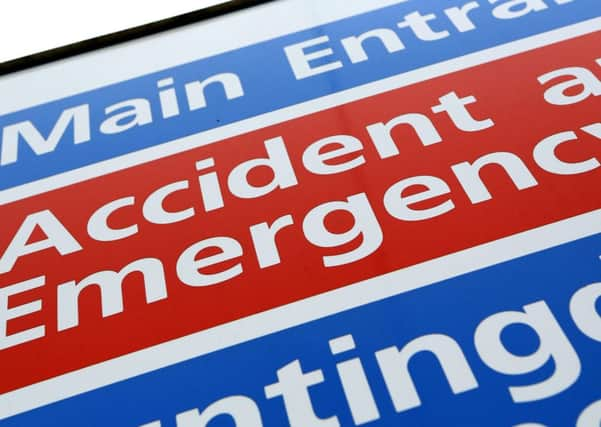Experts warn longer waits in A&E will become ‘inevitable’


A report by the Nuffield Trust and the Health Foundation said there is a “perfect storm” leading to increasing in waiting times in casualty units across England.
It comes amid growing concerns over A&E waits as more people and more with complex problems seek treatment.
Advertisement
Hide AdAdvertisement
Hide AdThe charities analysed 41 million A&E attendances from 2010 to 2013, finding both very cold and hot weather led to extra pressures and higher rates of waits of more than four hours.
But they also found that the number of people in emergency departments has risen as the population has grown and aged. People over the age of 75 spend an average of three and a half hours in A&E compared to two and a half hours for younger patients.
The authors said elderly people have more complex problems, which often require longer periods of care. Patients with long-term conditions are also likely to wait longer to be admitted or discharged - and people with more than one of these conditions are forced to wait even longer.
Those who were satisfied with their GP were also less likely to attend A&E.
Advertisement
Hide AdAdvertisement
Hide Ad“We may have reached the limit of what we can deliver with our current A&E capacity,” said report author and Nuffield Trust senior research analyst Ian Blunt.
“But without either new money to invest in A&E, or new ways to divert people to other parts of the NHS, rising waits may be inevitable.”
Jennifer Dixon, chief executive of the Health Foundation, added: “A&E departments are completely stretched, aggravated by increasing demand for emergency care. But the solutions are more complex than simply ‘more investment needed’, even if that were forthcoming.
“The access and quality of health and social care available to people outside hospital also needs to be very carefully examined - is it good enough to prevent the need for an A&E visit?
Advertisement
Hide AdAdvertisement
Hide Ad“We also know that hospitals have huge difficulty discharging patients because of a lack of social care. The flow of patients through hospital - to relieve A&E departments and also free up beds - is often disordered and blocked.”
British Medical Association chairman Mark Porter said: “The continued failure to meet rising demand with necessary investment means the NHS is now starting to buckle. Our emergency departments are full, patients are waiting longer to be seen and frontline services are stretched to breaking point.
“To alleviate pressure on emergency departments, it’s crucial that patients are treated in the most appropriate setting. Many elderly patients, for example, could be better treated in the community.
“The message is stark and clear - without urgent investment in frontline services and real action to put the health service on a sustainable financial footing for the future, the NHS simply will not be able to cope.”
Advertisement
Hide AdAdvertisement
Hide Ad* A report by the Audit Commission today points to a three-fold increase in numbers of NHS trusts facing financial problems.
Controller of Audit Marcine Waterman said: “This level of reporting is worrying and reflects the increasing risks to the financial sustainability of individual NHS trusts as they continue to face sizeable financial pressures due to a rising demand for services and the necessary focus on quality of care, whilst balancing the need for continued cost savings.”